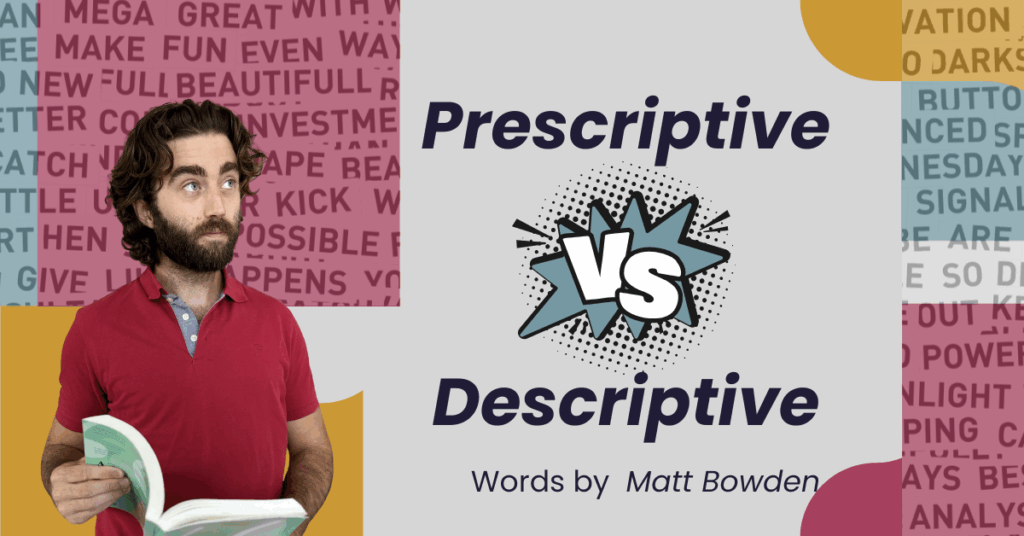
Prescriptive vs. Descriptive
During my linguistics and language studies, there turned out to be several surprising crossovers between how you approach language and how you can approach life and the people around you.
Linguists specialise in a whole range of work from teaching and translating to speech therapy, ancient language reconstruction, training actors to use accents, and anything else to do with language. No matter what they specialise in though, they will use either a prescriptive approach or a descriptive approach to their work, two approaches that are also vital in life.

A prescriptive approach is where you see something that’s not right, and you ‘prescribe’ a set of actions to fix it. This requires understanding a situation by judging it as acceptable or unacceptable, and trying to fix it if it’s the latter. This judgement is based on our subconscious beliefs of how the world should be. It’s what many call ‘logic’, but it is quite often cultural, and belief based.
For a linguist, a prescriptivist approach would look like correcting a student’s bad grammar so they learn the correct form. In real life, it could be teaching someone to drive and correcting road violations or correcting the way they dress or behave if it conflicts with the situation.
The descriptive approach, on the other hand, wants to describe what is happening, start to finish, without making any judgements about correct/incorrect and without trying to change or ‘fix’ something. With this approach, linguists can look at how a language is used across dialects and cultures to gain a better understanding of its speakers. When looking at different dialects, like in English, you would treat all the dialects and accents equally, rather than grading them based on beliefs of proper/improper speech. All forms of the language become equal in the descriptive approach because when you don’t pass judgement, they can all be considered valid forms of language.

In real life, the descriptive approach is useful for connecting with and understanding people without judgement, especially when someone is in distress. Rather than prescribing a 10-step plan to fix someone, for example, the descriptive approach forces you to learn about and understand their situation without trying to fix them. And like with languages, everyone becomes equal and valid when we don’t assign any judgement. The descriptive approach is useful when we need to practice empathy, active listening, and sit with someone when they are having a tough time.

Each approach has its pros and cons.
If someone is in emotional distress then handing them a prescribed list of fixes would be inappropriate to say the least, and only describing a learner driver’s bad driving without judgement or trying to improve it would also be inappropriate.
But as with most things, there is never a one-size-fits-all rule for how we lead life. That is why it’s important to know which approach to use when.
Prescriptivism is great for achieving goals. You identify a problem or a deficiency, and you plan how to rectify the situation. Easy peasy. Descriptivism is important for understanding a person, regardless of what they have done in the past or what their current situation is.
Descriptivism validates people, and while it is easy to pass judgement in most situations, truly empathising with someone is something we could all do a little better.
Read or listen to Matt’s Language Series on Coromind here.
Words by Matt Bowden

Coromind: Coromandel’s Collaborative Magazine

Help us take Coromind Magazine to new heights by becoming a member. Click here
Change the Weather for Your Business: Advertise with Us.
Advertise your business in the whole Hauraki Coromandel in the coolest Coromandel Art Magazine, from Waihi Beach/Paeroa /Thames up to the Great Barrier Island.
Advertise Smarter, Not Harder: Get in Touch






